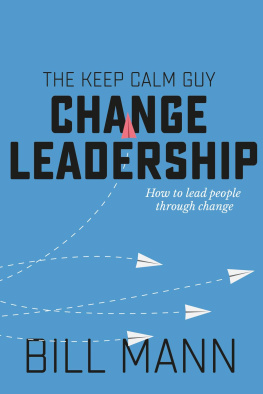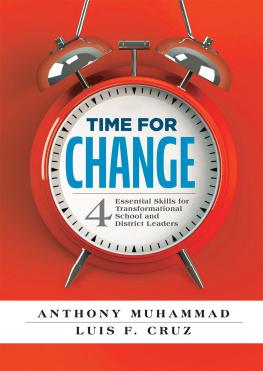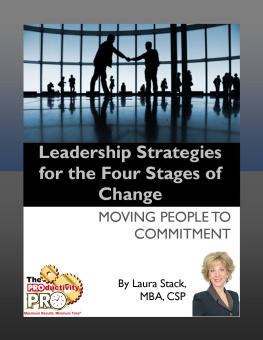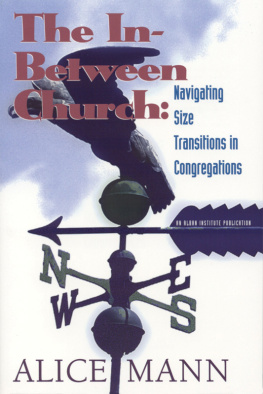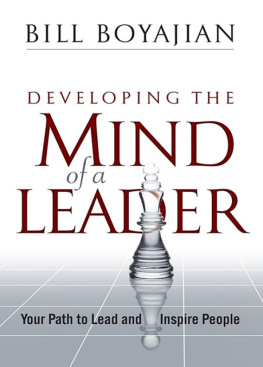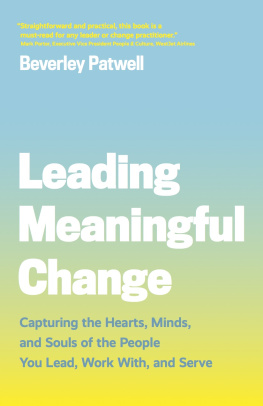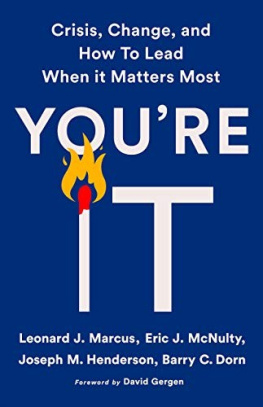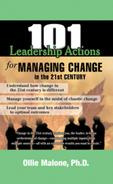Bill Mann - Change Leadership: how to lead people through change
Here you can read online Bill Mann - Change Leadership: how to lead people through change full text of the book (entire story) in english for free. Download pdf and epub, get meaning, cover and reviews about this ebook. year: 2020, publisher: Clink Street Publishing, genre: Politics. Description of the work, (preface) as well as reviews are available. Best literature library LitArk.com created for fans of good reading and offers a wide selection of genres:
Romance novel
Science fiction
Adventure
Detective
Science
History
Home and family
Prose
Art
Politics
Computer
Non-fiction
Religion
Business
Children
Humor
Choose a favorite category and find really read worthwhile books. Enjoy immersion in the world of imagination, feel the emotions of the characters or learn something new for yourself, make an fascinating discovery.
Change Leadership: how to lead people through change: summary, description and annotation
We offer to read an annotation, description, summary or preface (depends on what the author of the book "Change Leadership: how to lead people through change" wrote himself). If you haven't found the necessary information about the book — write in the comments, we will try to find it.
Bill Mann: author's other books
Who wrote Change Leadership: how to lead people through change? Find out the surname, the name of the author of the book and a list of all author's works by series.
Change Leadership: how to lead people through change — read online for free the complete book (whole text) full work
Below is the text of the book, divided by pages. System saving the place of the last page read, allows you to conveniently read the book "Change Leadership: how to lead people through change" online for free, without having to search again every time where you left off. Put a bookmark, and you can go to the page where you finished reading at any time.
Font size:
Interval:
Bookmark:
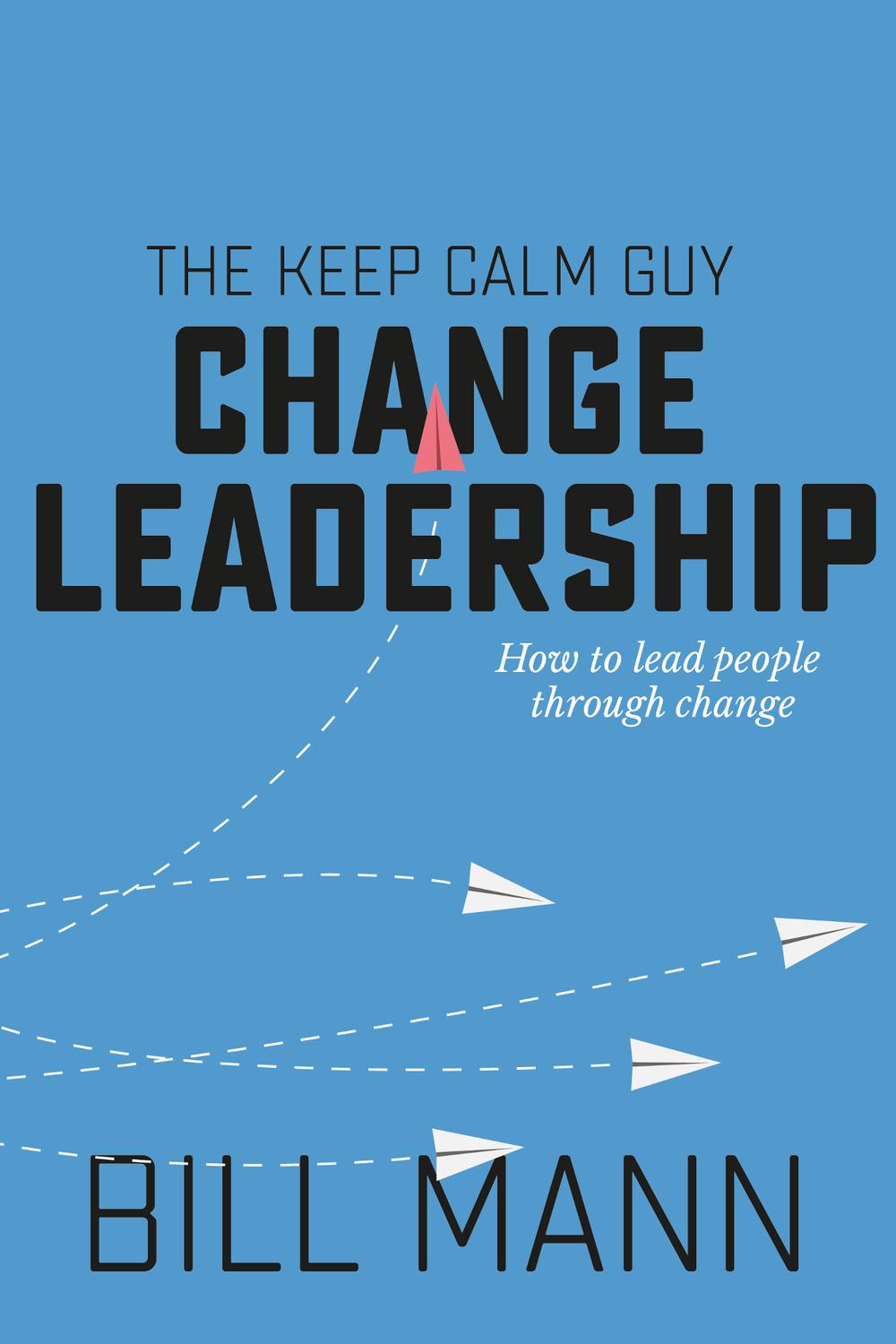
v
This book is dedicated to my wife, Sarah,
for her unconditional love and support
vi
What people are saying about the author, and his previous book How to Keep Calm and Carry On, which describes how to successfully face change from a personal perspective:
A book to keep and return to for ongoing guidance and insight. Well worth the read.
Id 100% recommend this book for anyone undergoing major changes in their lives.
As a life coach I am always looking for helpful books to recommend to my clients I recommend this excellent little book.
A life affirming book I would strongly recommend to anyone experiencing change, no matter how small.
Wow what a read!
This book is one to read start to finish, and easy to dip in and out of as future reference.
A book to keep and return to for ongoing guidance and insight. Well worth the read. iv
- viii
Organisations are constantly changing. It could be something small such as a change to a single team or individual, or a change to working processes. It may be something larger such as a restructure or reorganisation. It may even be something all-encompassing such as a merger, acquisition, or a full-scale transformation programme. Whatever it is, changes are commonplace but they all usually miss one vital ingredient. Formal Change Management processes will ensure the analysis is done, designs completed, and implementation plans are executed. They will even include communication plans and mapping of roles and resources. All that is missing is the most important component winning the hearts and minds of the people involved so they are fully committed to making it happen. Without this there will be resistance. And if the resistance is not overcome, the change programme will fail.
Change can be imposed but it is a costly, painful, and nave approach. Losing key resources and the drain on management time alone is to be avoided. Treating staff as people rather than resources, managing impacts with humanity, and managing relationships with emotional intelligence, will deliver results, respect, and loyalty that will long outlive the change project. By securing the full commitment of everyone involved change can be made quickly and with ease.
If you have picked up this book the chances are you are facing change in your organisation, or perhaps you are the one leading the change. Either way it isnt easy. Whether it is a full-scale reorganisation, perhaps as the result of a merger or acquisition, or simply redeploying individuals where the business needs it, getting the buy-in and support of all involved is difficult for even the most enlightened leaders. Even routine activities such as managing a pay review can stir up a tidal wave of emotions if not handled with care. The consequences of simply imposing change can lead to months of lost productivity, damage to morale and motivation, and ultimately impacts customer service and delivery. All of this can be mitigated if not avoided by skilful handling and the use of emotional intelligence. Getting it right can save businesses a fortune in management time, recruitment fees, and lost productivity. It can avoid damaging relationships and trust. Add to that the motivation of an engaged and loyal workforce and the benefits last for many years.
When we go to work and enter the office door we put on our professional persona and adopt the role we were slotted in to. Yet we cannot separate this from who we are as a person and neither can our colleagues or staff. To manage change purely in the context of the business structure and professional roles is to deny the fact we are dealing with people with deeply personal cares and worries, and missing the key ingredient to managing change successfully.
Bill Mann has spent a long career in businesses of vastly different sizes and in many different countries. He has managed change from the individual all the way through to M&A scale restructuring. He has seen it all. In this book he explains the critical ingredient to success, often overlooked by many keeping staff fully engaged all the way through the process. The pain that usually accompanies major change the uncertainty, dip in morale and productivity, loss of key people, and inevitable impact on customer service, can be avoided with skilful handling.
On the 7th July 2005 Bill was caught up in the London bombings when he was in the carriage of the Circle Line train at Edgware Road that was targeted by a suicide bomber. He was fortunate to escape with his life, but little did he know that it would never be the same again. A few years later he was still grappling with the aftereffects of this trauma when his wife was diagnosed with breast cancer. Left alone to bring up his young family Bills life was turned upside down. It is testament to his inner strength and emotional intelligence that he, and his family, came through this period of his life successfully. Bill has learnt a lot about change the hard way, and it is described with a refreshing honesty and clarity in his previous book How to Keep Calm and Carry On.
In this book Bill shows us we can use emotional intelligence to lead any size of change in business. Unfortunately, in many organisations change is implemented by simply being imposed a blunt instrument that has many unintended consequences. With the tools, techniques, and behaviours described in the following chapters the same change, no matter how unpalatable to some staff, can be made with the minimum of disruption, but also with care, empathy, and understanding. I recommend it to any executive or manager responsible for making change in their organisation, or anyone simply wishing to develop their emotional intelligence.
Its the smells and sounds that stay with you. The taste of soot and smoke engulfed my senses for days, weeks and months afterwards. The sounds, of fear, distress, unimaginable pain and pure terror, became the soundtrack for my nightmares.
My name is Bill Mann and on July 7th, 2005, I boarded a Circle Line London Underground train to Paddington. It was normal day for me. Balmy by the dubious standards of the English summer, so an uncomfortable commute lay ahead on Londons bustling transport network, but my thoughts were on the day ahead. Meetings, specific jobs in the office in Paddington.
Id said my usual goodbyes to my wife and children and set off for London Fenchurch Street, before wandering around the corner to Tower Hill underground station. I stood on the platform in the same spot I always did despite the rush hour. When the train came to a screeching halt, I boarded the same carriage I always did. A creature of habit, perhaps, but perfect for a quick exit at the other end.
The train rolled into Edgware Road. Id occasionally disembark there and enjoy a walk into Paddington. I dont know why I didnt that day. If only I had.
I wouldnt describe myself as a people watcher on the Tube. Many are. Some are happy with their thoughts, like me, while others read the morning papers and most, in this digital age, are engrossed in their phones and tablets. I sat contemplating the day ahead as the train moved into the tunnel away from the Edgware Road platform.
A train passed beside us in the opposite direction as I was thrown from my seat towards the doors. The flash of light was blinding and the intensity of the heat scolded my skin which was already damp with sweat. The darkness was illuminated only by the emergency lighting in the tunnel and the burning embers that flashed past me. The screeching sound of metal on metal was only later drowned out by the screams that would haunt me.
Font size:
Interval:
Bookmark:
Similar books «Change Leadership: how to lead people through change»
Look at similar books to Change Leadership: how to lead people through change. We have selected literature similar in name and meaning in the hope of providing readers with more options to find new, interesting, not yet read works.
Discussion, reviews of the book Change Leadership: how to lead people through change and just readers' own opinions. Leave your comments, write what you think about the work, its meaning or the main characters. Specify what exactly you liked and what you didn't like, and why you think so.

